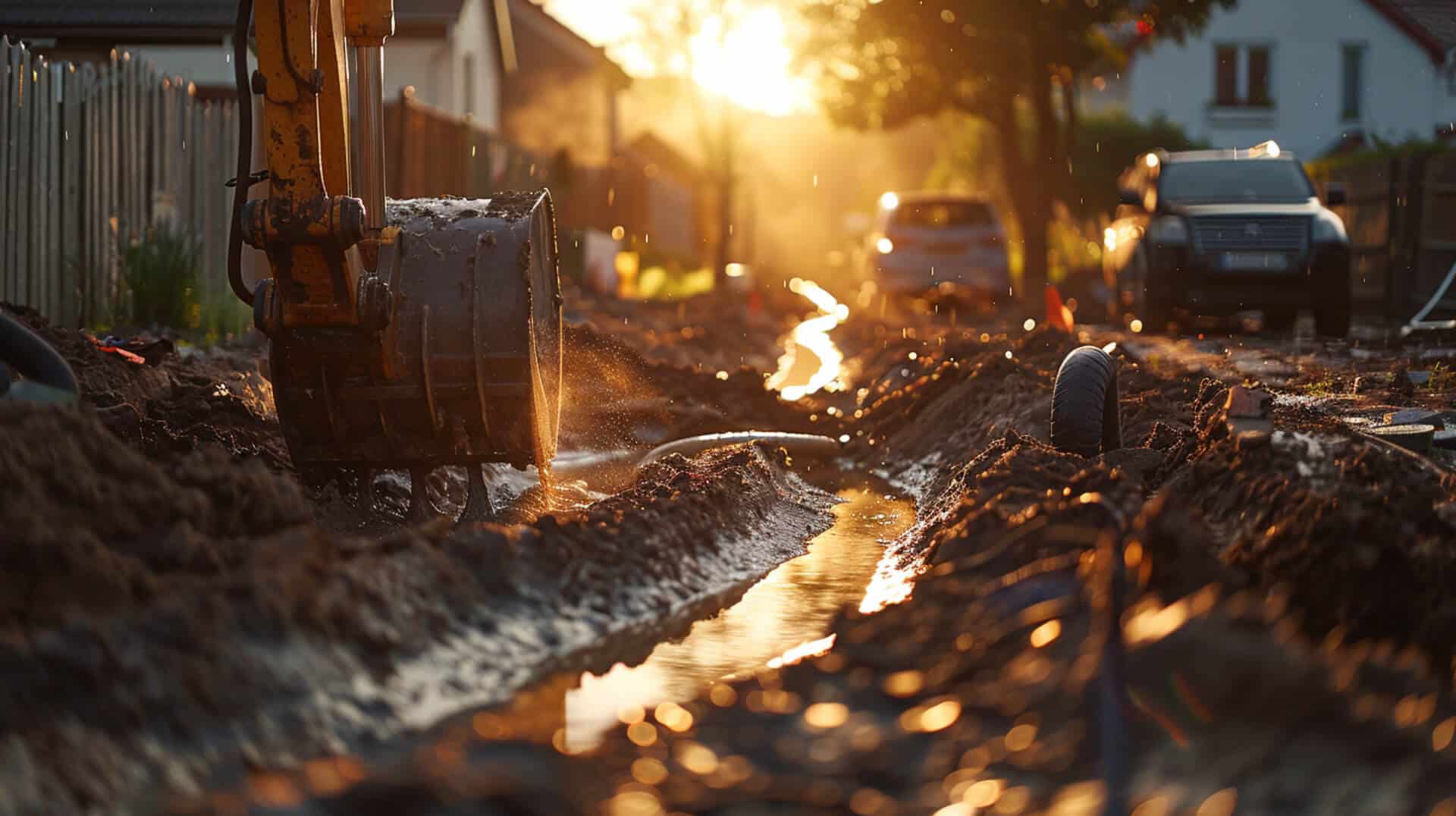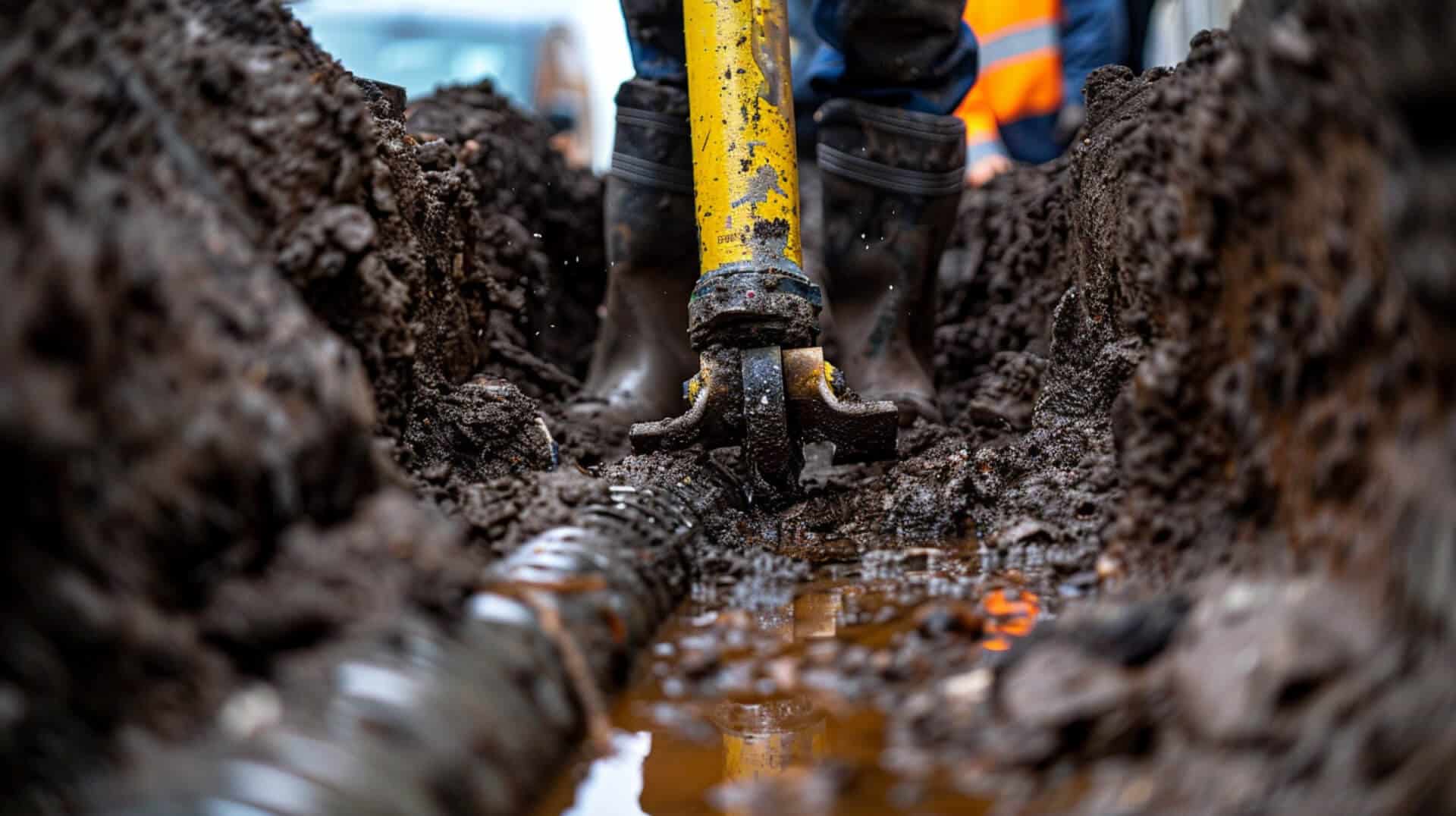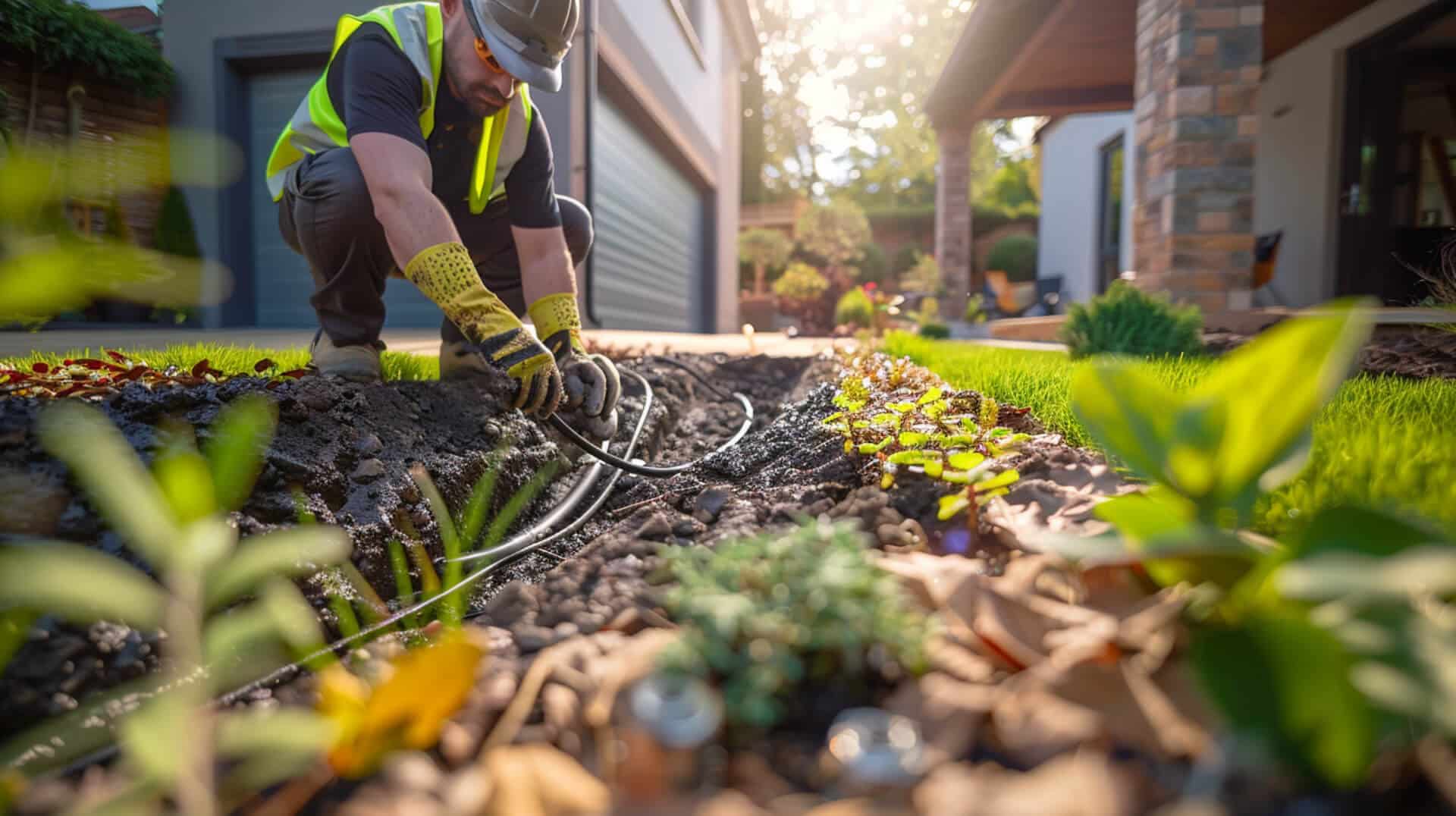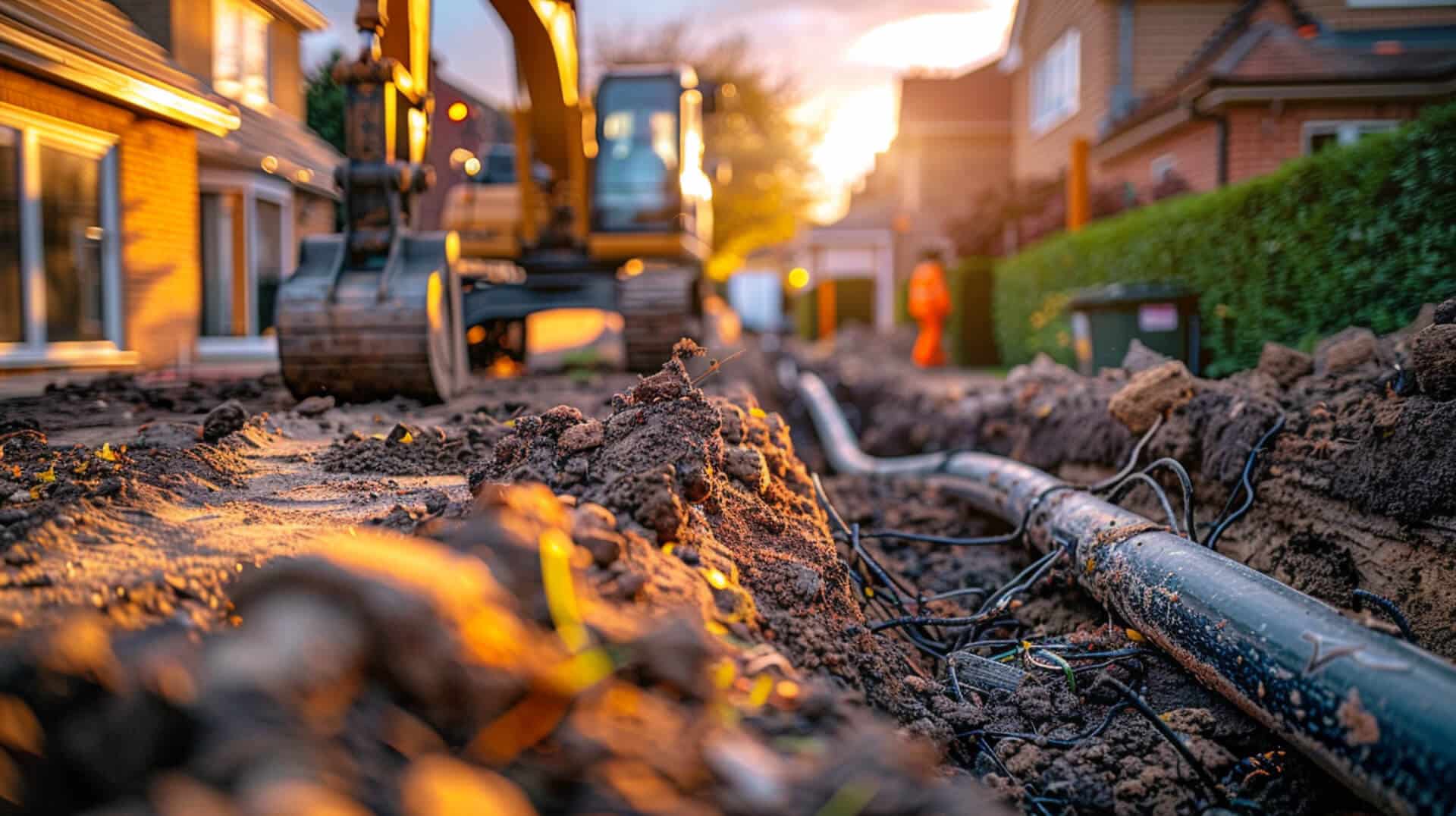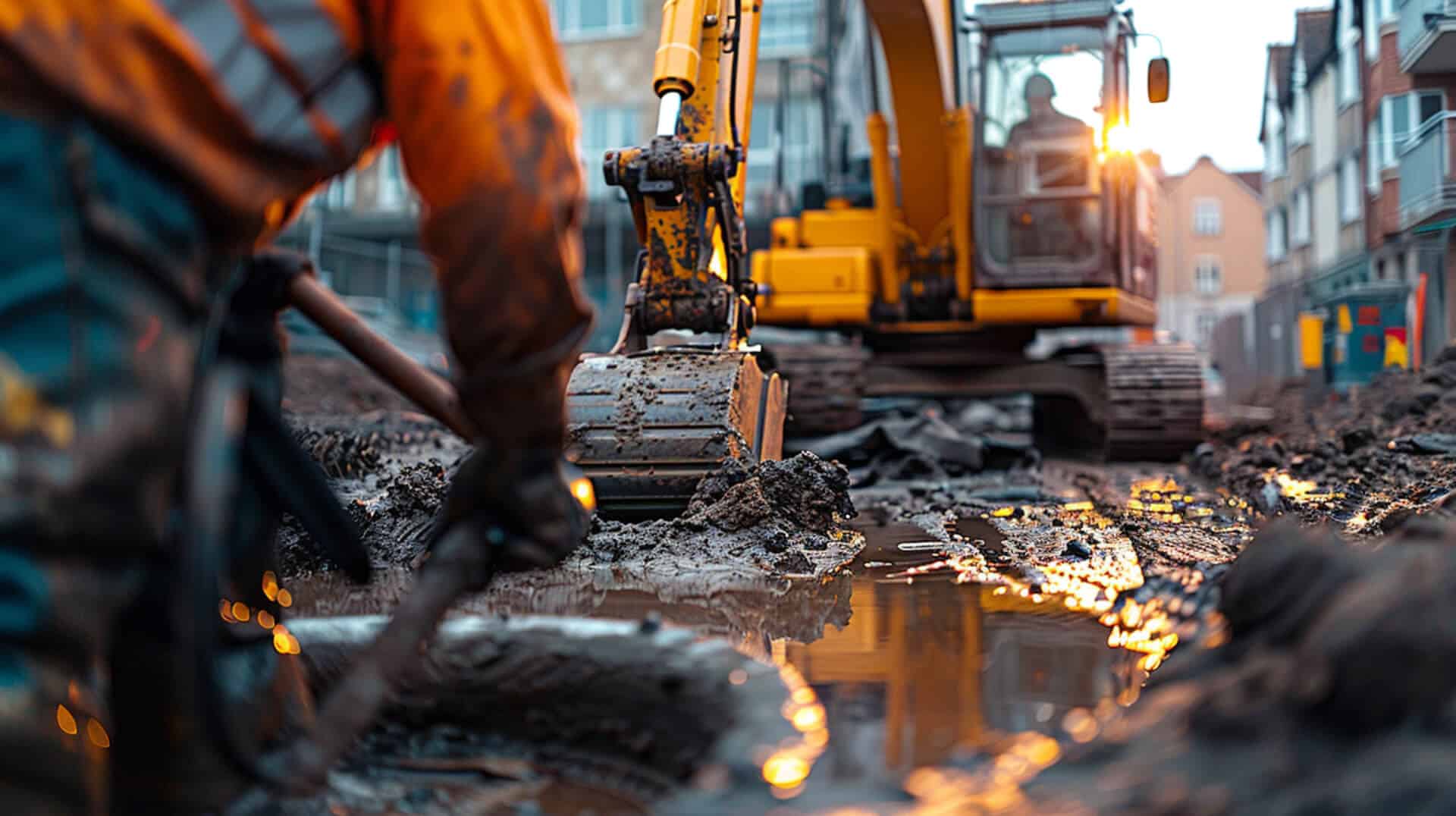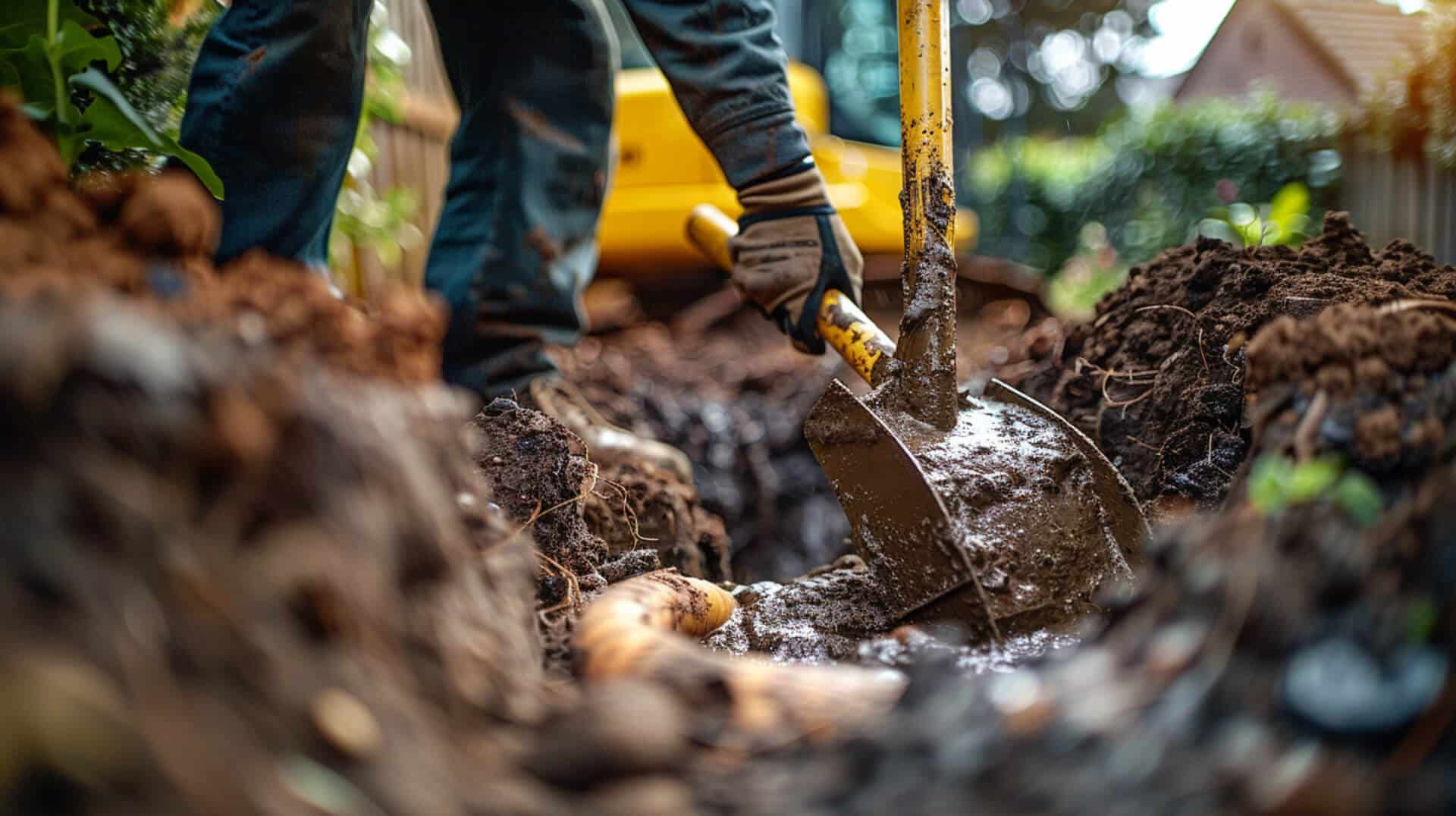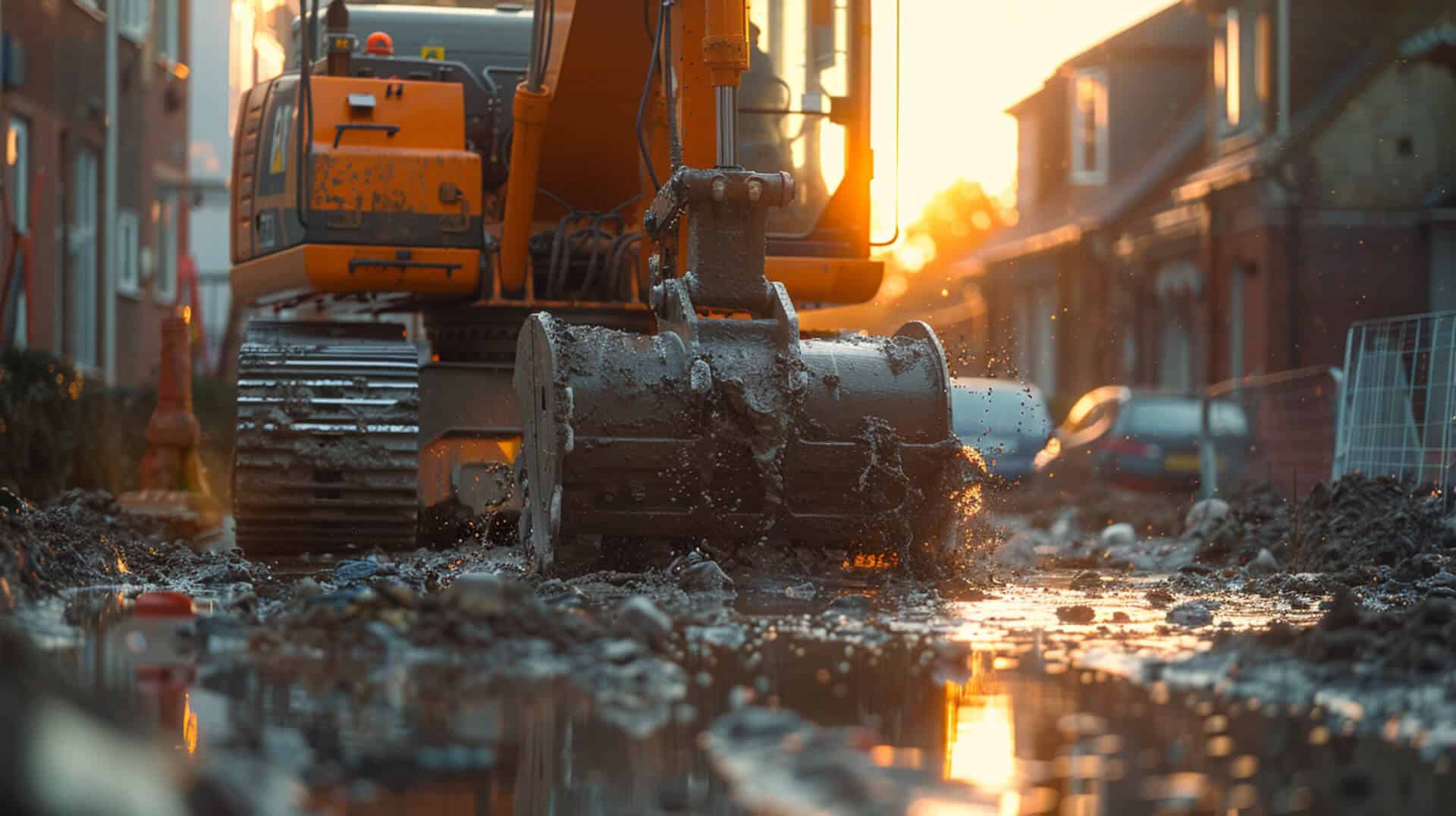 What Is Drain Excavation Service And When Is It Necessary
What Is Drain Excavation Service And When Is It Necessary
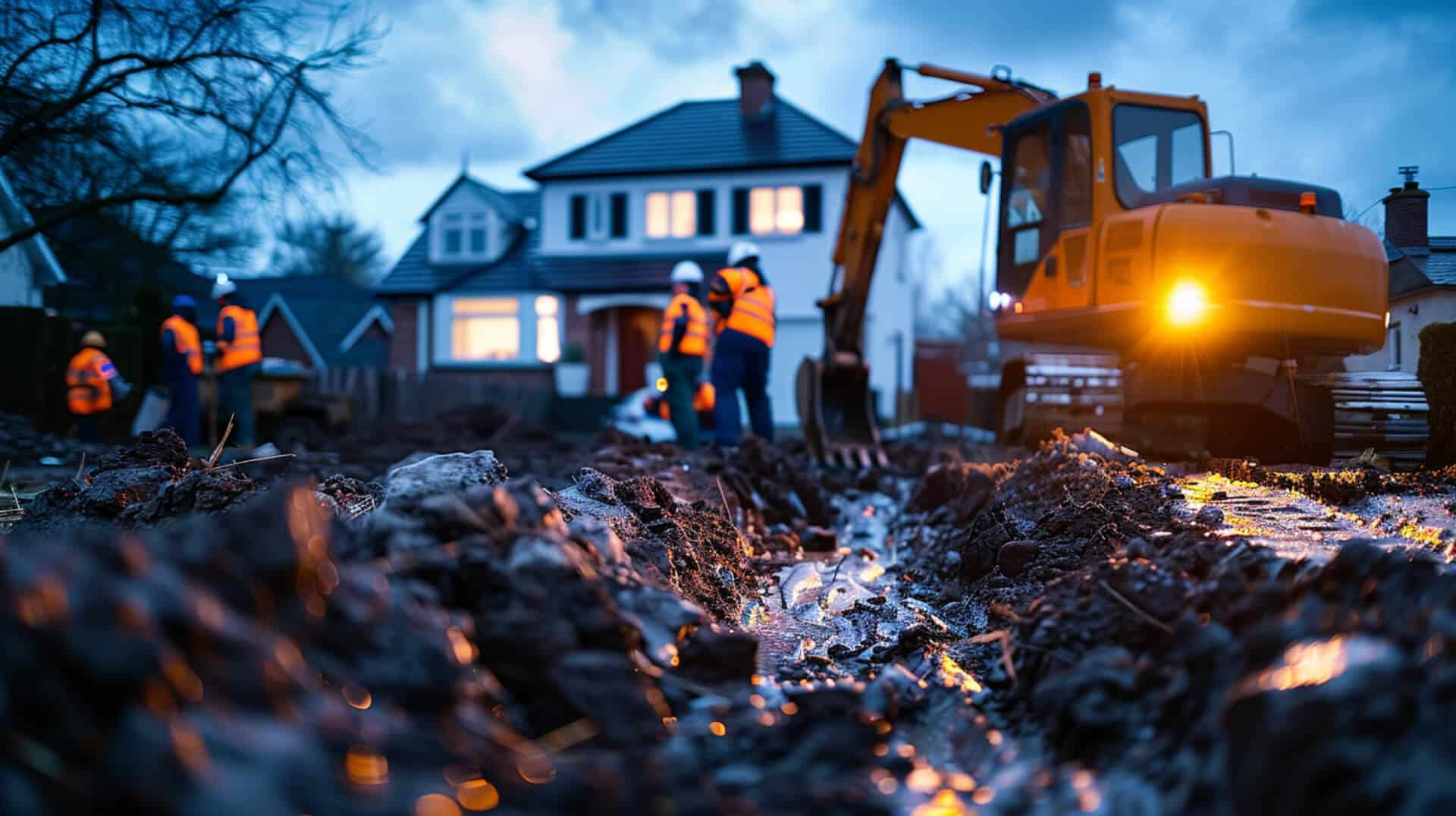
Drain excavation is a specialised service that involves the physical removal of earth to access underground drainage systems for repair or replacement. This method is typically employed when less invasive repair techniques are insufficient to resolve severe drainage issues. Drain excavation becomes necessary when the integrity of the drainage system is compromised to the extent that it poses a risk to property or public health.
Objectives of Drain Excavation
The primary objectives of drain excavation are to:
- Restore proper function to damaged drainage systems.
- Address severe issues such as pipe collapse, major blockages, or significant root intrusion.
- Prevent further property damage or environmental contamination.
Limitations of Traditional Repair Methods
Traditional repair methods may not suffice due to:
- The extent of damage being beyond the scope of non-invasive techniques.
- The need for complete pipe replacement that cannot be performed trenchlessly.
- The location or type of damage requiring direct access to the affected pipes.
Assessing the Need for Excavation
Drain excavation is considered when:
- Persistent drainage problems cannot be resolved through cleaning or relining.
- Structural damage to pipes is evident, requiring physical intervention.
- Safety risks are present, necessitating the replacement of compromised sections.
Role in Maintenance and Repair Strategies
Drain excavation services are integral to comprehensive drainage maintenance and repair strategies, ensuring:
- The longevity of the drainage infrastructure.
- The prevention of emergency situations due to unresolved issues.
- The adherence to environmental and safety regulations.
By understanding when and why drain excavation is necessary, property owners can make informed decisions about the care and management of their drainage systems.
Recognising the Need for Excavation
Indicators That Excavation May Be Necessary
When drainage systems fail to function correctly, certain signs can indicate that more invasive measures, such as excavation, may be required. Persistent clogs and slow drainage often suggest a deeper issue within the sewer lines that surface-level solutions cannot address. If you’re experiencing these problems repeatedly, it may be time to consider excavation.
Sewer Gas Odours and Unusual Vegetation Growth
The presence of sewer gas odours is a clear warning sign of a possible breach in the sewer system. Similarly, unusual vegetation growth near sewer lines can be a symptom of leakage, providing extra nutrients to the soil from the broken pipes. Both are strong indicators that excavation may be necessary to rectify the underlying issues.
The Impact of Subsidence on Drainage Systems
Subsidence, or the sinking of ground levels, can have a direct and detrimental effect on sewer lines, often leading to cracks or collapses that require immediate attention. If subsidence is observed, it is crucial to act promptly to prevent further damage, which may include excavating the affected area to repair or replace the compromised sections of the drainage system.
The Process of Drain Excavation Explained
Overview of the Excavation Procedure
Drain excavation is a comprehensive process that begins with a thorough assessment of the affected drainage system. The procedure typically involves several key steps, starting with the initial site evaluation and ending with the restoration of the excavated area.
Safety Measures During Excavation
Safety is paramount throughout the excavation process. Before digging commences, professionals conduct utility tracing to avoid damaging existing underground services. Workers are equipped with appropriate safety gear, and measures are in place to secure the excavation site, ensuring the safety of both the workers and the surrounding area.
Importance of Material Management and Site Restoration
After addressing the drainage issue, material management becomes a focus. Excavated soil and debris are handled responsibly, often being reused to refill the trenches. Site restoration is essential to return the area to its original state or better, minimising the impact on the property.
Excavation Tailored to Damage Severity
The extent of the excavation is determined by the severity of the damage. Minor repairs may require only small, targeted excavations, while significant damage could necessitate extensive digging to replace or repair large sections of the sewer line. Each situation is assessed individually to ensure the most effective and efficient approach is taken.
Alternatives to Excavation and Their Viability
Trenchless Repair Options for Less Severe Conditions
For drainage issues that are less severe, trenchless repair methods offer a less invasive alternative to traditional excavation. These methods include:
- Cured-in-Place Pipe (CIPP): A resin-saturated liner is inserted into the existing pipe and cured to form a new, seamless pipe within a pipe.
- Pipe Bursting: An existing pipe is fractured outward as a new one is pulled through it.
- Slip Lining: A smaller, “carrier pipe” is inserted into the larger host pipe and then grouted into place.
Role of CCTV Inspections in Assessing Drainage Systems
Closed-circuit television (CCTV) inspections are a critical tool in evaluating the condition of underground pipes. They provide real-time visuals that help determine the extent of damage and the viability of trenchless repair methods.
Scenarios Necessitating Excavation
Despite the availability of trenchless technologies, certain situations may still necessitate excavation, such as:
- Severe pipe collapse
- Extensive root intrusion
- Pipes that have significantly misaligned
Cost and Disruption Considerations
The choice between excavation and trenchless methods is often influenced by cost and the potential for disruption. Trenchless repairs can be more cost-effective and typically require less time, minimising disruption to your property and daily activities. However, when the damage is too extensive, excavation may be the only solution to ensure a long-term fix.
Cost Factors and Budgeting for Drain Excavation
Determining the Cost of Drain Excavation Services
The cost of drain excavation services is influenced by a variety of factors. The primary considerations include:
- Extent of Damage: The severity and location of the damage can significantly affect the cost, as more extensive repairs typically require more labour and materials.
- Accessibility: The ease with which professionals can access the affected area plays a role in cost determination. Difficult-to-reach areas may necessitate specialised equipment or additional labour.
- Previous Repair Attempts: Prior attempts to fix the issue using non-invasive methods can impact the overall cost, especially if those attempts have failed and the problem has worsened.
Accurate Financial Estimation for Property Owners
To accurately estimate the financial implications of drain excavation, property owners should:
- Obtain multiple quotes from reputable service providers.
- Ensure that the quotes are itemised, detailing labour, materials, and any additional fees.
- Consider the potential for unforeseen complications that could arise during the excavation process.
Importance of Transparent Pricing
Transparent pricing is critical for effective budget planning. It allows you to:
- Understand the breakdown of costs.
- Prepare for the financial commitment required.
- Avoid unexpected expenses that could arise during the project.
Impact of Previous Repairs on Excavation Costs
Previous repair attempts can affect the overall cost of excavation. If earlier, less invasive methods have failed, the damage may have become more extensive, leading to increased costs for excavation and repair. It is essential to factor in these previous attempts when budgeting for the excavation process.
Impact on Property and Mitigation Strategies
Assessing the Impact of Excavation
Drain excavation can have significant effects on both residential and commercial properties. The process may involve the disruption of landscaping, driveways, and other surface structures. Understanding these potential impacts is crucial for property owners to prepare for the excavation process.
Preparing for Excavation
To mitigate the effects of excavation, property owners should:
- Clear the area of personal belongings and movable structures.
- Discuss with the service provider about the extent of the excavation to set realistic expectations.
- Plan for alternative access routes if driveways or walkways are affected.
Weather Considerations in Excavation Planning
Weather conditions play a pivotal role in scheduling excavation. Adverse weather can cause delays and affect the safety of the operation. Service providers typically monitor forecasts to choose an appropriate time for the excavation, aiming to minimise delays and ensure the safety of workers.
Ensuring Minimal Disruption
Professionals in the field are adept at executing the excavation with minimal disruption. They employ precise techniques to target only the necessary areas and work efficiently to restore the site as quickly as possible. Quick restoration is a priority, aiming to reduce the inconvenience to property owners and return the property to its functional state.
Selecting a Professional Excavation Service
When facing the necessity of drain excavation, choosing the right professional service is paramount. The selection process should be meticulous, ensuring that the service provider can address your specific needs with expertise and efficiency.
Criteria for Evaluating Service Providers
To ensure you select a qualified excavation service, consider the following criteria:
- Licencing and Certification: Verify that the service provider holds the necessary licences and certifications to perform excavation work in your area.
- Experience: Look for a company with a proven track record of successfully completing projects similar to yours.
- Insurance: Ensure the service provider carries adequate insurance to protect against any potential damages that may occur during the excavation process.
The Role of Professional Consultations
Professional consultations are invaluable for:
- Assessing the scope of the project.
- Discussing potential strategies to minimise disruption.
- Ensuring that the proposed solution aligns with your specific needs and circumstances.
Importance of Experience with Similar Properties
Experience with properties similar to yours ensures that the service provider is familiar with potential challenges and nuances related to your specific type of property, which can lead to a more efficient and effective excavation process.
Verifying Credentials and Reputation
To verify the credentials and reputation of a service provider, you should:
- Request and check references from past clients.
- Read online reviews and testimonials.
- Consult with local building authorities or trade associations for any records of the company’s past performance.
By thoroughly vetting potential service providers, you can be confident in your choice and the quality of the excavation work to be performed on your property.
Preventative Measures to Avoid Future Excavations
Regular Maintenance to Prevent Drainage Issues
Regular maintenance is essential in preventing the conditions that may necessitate excavation. By conducting annual inspections and cleaning, you can identify and address minor issues before they escalate. This proactive approach not only preserves the integrity of your drainage system but also saves on potential future costs associated with more extensive repairs.
The Impact of Non-Degradable Materials and Grease
Flushing non-degradable materials and disposing of grease down the drain can lead to significant blockages and damage over time. These materials do not break down easily and can accumulate, causing obstructions that are difficult to clear without professional intervention. Understanding and avoiding the introduction of such materials into your drainage system is a key step in maintaining its health.
Importance of Annual Inspections
Annual inspections of your drainage system are recommended to ensure it remains in optimal condition. These inspections can reveal early signs of wear, corrosion, or other issues that could lead to more serious problems if left unaddressed.
Effective Drain Management Practices
Implementing effective drain management practices involves:
- Regularly scheduled inspections and cleanings.
- Being mindful of what goes down your drains.
- Responding promptly to any signs of drainage issues.
By adhering to these practices, property owners can significantly reduce the likelihood of severe drain problems that might require excavation.
Understanding Insurance Coverage for Excavation Services
Coverage Aspects for Drain Excavation
When considering drain excavation, it’s essential to understand what aspects are typically covered by insurance. Policies may vary, but generally, insurance can cover:
- Accidental Damage: Sudden and unforeseen damage to your drainage system.
- Emergency Repairs: Immediate work required to prevent further damage to the property.
Policy Details and Claims
The specifics of your policy regarding wear and tear can significantly affect claims. Most insurance policies do not cover damages that occur gradually, such as those due to ageing or poor maintenance. It is crucial to review the terms of your policy to determine the extent of coverage provided for excavation services.
Importance of Reviewing Insurance Before Excavation
Before beginning any excavation work, reviewing your insurance coverage is important for several reasons:
- To confirm whether the cause of damage is covered.
- To understand the claim process and required documentation.
- To ensure that you are aware of any deductibles or coverage limits.
Navigating Insurance Claims
Navigating insurance claims for excavation services can be complex. Property owners should:
- Document the damage with photos or videos.
- Keep detailed records of all communications with the insurance company.
- Consider consulting with an insurance adjuster or legal professional if necessary.
By being well-informed about your insurance coverage and the claims process, you can approach drain excavation with greater confidence and preparedness.
DIY Versus Professional Excavation: Making the Right Choice
Addressing Drain Issues with DIY Methods
Minor drain blockages and simple maintenance can often be managed by property owners using DIY methods. Tasks such as routine cleaning and the use of residential drain unblockers fall within the scope of DIY. However, it is important to recognise the limitations of these methods and the point at which professional expertise is required.
Considerations for DIY Excavation
Before undertaking any form of DIY excavation, several factors must be considered:
- Skill Level: Assess your own capabilities and knowledge of plumbing systems to ensure the task is within your skill set.
- Insurance: Review your insurance policy to understand what is covered in the event of accidental damage during DIY efforts.
- Permissions: Check local regulations to determine if permits are required for the type of work you plan to undertake.
The Necessity of Professional Intervention
For major excavation projects, professional intervention is strongly recommended. Professionals possess the necessary equipment, expertise, and understanding of safety protocols to effectively address complex drainage issues without causing further damage.
Assessing the Need for Professional Services
Property owners should call in professionals when:
- The problem persists despite DIY attempts.
- The issue is beyond surface-level and likely involves the main sewer line.
- There is a risk of damaging utility lines or causing structural damage to the property.
By carefully evaluating the situation and recognising the potential risks and complexities involved, property owners can make an informed decision on when to seek professional excavation services.
The Role of Modern Technology in Drain Excavation
Advancements in Excavation and Repair Techniques
The field of drain excavation has seen significant technological advancements, leading to more efficient and less invasive repair techniques. Innovations such as trenchless technology have revolutionised the way professionals approach drainage repairs.
Trenchless Options Versus Traditional Excavation
Trenchless repair methods, such as Cured-in-Place Pipe (CIPP) lining and pipe bursting, offer a stark contrast to traditional excavation in terms of efficiency. These methods allow repairs to be conducted with minimal surface disruption, often resulting in faster completion times and reduced costs.
Critical Role of CCTV Inspection in Pre-Assessment
Closed-Circuit Television (CCTV) inspections play a pivotal role in the pre-assessment phase of drain repair. By providing a clear visual of the pipe’s interior, CCTV inspections help professionals diagnose issues accurately and select the most appropriate repair method.
Minimising Environmental Impact and Disruption
Modern technologies in drain excavation aim to minimise environmental impact and disruption to the surrounding area. Techniques such as drain lining and no-dig methods not only preserve the landscape but also reduce the carbon footprint associated with traditional excavation practices. These advancements reflect the industry’s commitment to sustainability and efficiency.
Key Takeaways on Drain Excavation Services
Drain excavation is a significant undertaking that should be approached with careful consideration. Understanding when and why this service is necessary can help property stakeholders make informed decisions. Here are the key points to remember:
Proactive Drainage System Management
- Regular maintenance and inspections are crucial in preventing severe drainage issues that could lead to the need for excavation.
- Being vigilant about what enters the drainage system can mitigate the risk of blockages and damage.
The Importance of a Balanced Approach
- A balanced approach to drainage management, combining preventive care with timely intervention, is essential for maintaining system integrity.
- Early detection of potential problems can save considerable time and expense in the long run.
Empowerment Through Understanding
- Knowledge of the signs that indicate the need for excavation, the process involved, and the alternatives available empowers property owners to take charge of their drainage issues.
- Understanding the intricacies of drain excavation, including the potential impact on property and the importance of choosing a qualified professional, enables stakeholders to navigate these challenges effectively.
